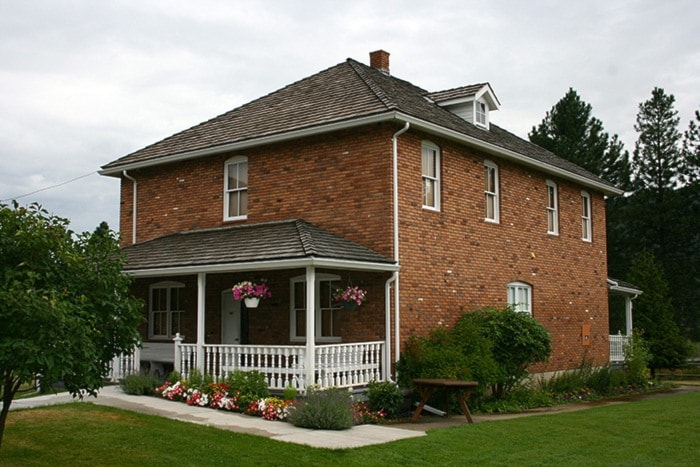The Doukhobor Discovery Centre (DDC) has been a constant fixture in the Castlegar heritage and history scene for 45 years, but a lot of changes have taken place in the last three years, making the centre worth another look.

The museum is designed to replicate a traditional Doukhobor village. The first building at the site was built in 1971 from materials that were reclaimed from original Doukhobor villages throughout the region. From that point the museum has continued to grow, adding to that first common building which houses mainly artifacts and recreated bedrooms, a second common building that is home to audio, and visual displays including a photo history timeline.

Other structures include a barn and a blacksmith shop that is full of various tools and blacksmithing implements including an operational forge. The shop is over 100 years old and was relocated from Pass Creek.
An annex building houses a gift shop full of hand-made Doukhobor items, office space and a room full of interactive displays, books and toys for children. A banya or sauna type bath house, and an implement shed filled with outdoor tools can also be toured while visiting the centre.
Many of the recent changes coincide with the arrival the museum's director Lisa Poznikoff, who was raised by Doukhobor parents and spent seven years as the editor of Iskra, a bilingual Russian-English USCC Doukhobor publication. Some of the major changes have been improvements to the centre's grounds. The outdoor spaces reflect a calm and peaceful atmosphere. Lovely hand-made benches offer a place to sit and reflect. The grounds are also graced with a statue of Leo Tolstoy and two rebuilt wagons — a farm wagon and a mountain wagon with padded seats.
Thanks to some RDCK funding, the walkways have been replaced with wider, accessible concrete sidewalks.

One recent addition to the archive collection is a display that has been on loan to the centre since last year featuring a large collection of textiles ranging from dish towels and bedding to table linens and clothing created and gifted to the Verigin family over the twentieth century. Laura Verigin has been their custodian, but at 90 years of age she was finding the task daunting so has passed their care on to the DDC for the time being.
The most recent acquisition is a large panoramic photograph of Glade circa 1910. The image shows completed villages and work being done clearing land to make room for orchards and gardens. Smoke from fires used to clear the land is also clearly visible. It is one of those villages that the DDC was modeled after. Originally placed in the gift shop for sale on behalf of the Cultural Interpretive Society, the museum decided it didn't want to part with the photo, so it successfully applied for a grant from the Columbia Kootenay Cultural Alliance to purchase the image.
Visitor numbers have been on the rise with 1700 in 2014 and 1800 in 2015. Current figures suggest this year's numbers will be even higher. Visitors can take a self-guided tour or a guided tour and staff is on hand to answer questions on Doukhobor history. The DDC is open from May 1 through Sept. 30, Monday through Saturday from 10 a.m. to 5 p.m. and Sundays from 12 p.m. to 5 p.m.
The DDC now has its sights set on a complete renovation of their bistro, which has been closed for about four years. The renovation would include completely renovating the kitchen, new appliances, adding a porch for outdoor dining and reconfiguring the washrooms with accessibility features and indoor access instead of the current outdoor-only access. This renovation would allow the bistro to stay open longer or possibly year-round. The museum is fundraising for this project on an ongoing basis including borscht sales through a neighbouring business — The Apple Guy. Each month a group of ladies gets together to cook 60 jars of traditional borscht and the jars are usually sold out before another batch is ready. Sales have already reached the $10,000 mark. That figure barely puts a dent in the total amount needed however, so along with fundraising efforts grants are also being sought in order to reach the goal of reopening the once popular stop for authentic Doukhobor food.
Another major project is the digital cataloging of the archives. Many records and a lot of information were lost in a fire and with the passage of years. Poznikoff is tackling the time-consuming project which will leave the museum with a more permanent and secure record of the treasures it holds once it is completed.
